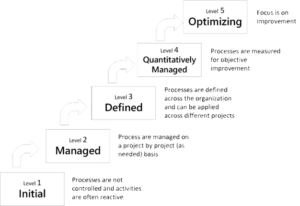Using a new system always takes some getting used to, but there may be another dimension to the adjustment. Going from an old system to a new one has a learning curve, but so does going from a loose, informal process to a more rigid, formal one. The latter can be problematic. Addressing the process adjustment and the system adjustment seems like a solution hidden in plain sight.
 Process maturity, the common use of well-defined, efficient processes to accomplish activities repeated over time and across different people, is a common goal for an ERP implementation. For most businesses, everything is better if processes are well thought-out, and everyone sticks to them
Process maturity, the common use of well-defined, efficient processes to accomplish activities repeated over time and across different people, is a common goal for an ERP implementation. For most businesses, everything is better if processes are well thought-out, and everyone sticks to them
That’s not as easy as it sounds. In general, people do not like change and will resist changes to how they currently work in favor of how the new system wants them to work. Adopting a new process to get the most out of an ERP system is one challenge, but there can be more. If your organization uses an ERP system to move up the CMMI ladder, your implementation might be more difficult because you are tackling two challenges simultaneously.
Developed at Carnegie Mellon University, the Capability Maturity Model Integration, illustrated below, provides a framework for evaluating process maturity. There are several key questions to ask.
What is your current process maturity level? An assessment identifies areas where process improvement is needed and provides a baseline for measuring improvement.
How standard are your processes? Standardization helps ensure that processes are consistent across the organization and can be automated effectively.
Are processes documented? Clear process documentation helps ensure processes are understood and executed consistently.
Optimizing processes is often an important goal for an ERP implementation. Process optimization can help an organization operate more efficiently, reduce costs, and improve customer service.
Impact
Suppose your organization is at level 1 and wants to move to level 3 or 4. It pays to be mindful that you are not only asking people to learn new software but also adopting a more systematic, process-oriented way of working.
It can be done, but it is harder than replacing one well-defined process with another. Suppose your organization will be moving up the process maturity ladder. In that case, extra attention must be paid to underscoring why the change is happening, the importance of it, everyone’s role in making it work, and their ability to use the software consistently.
This will require more attention to change management and a structured approach, including planning, assessment, training, monitoring, and reinforcement.




















